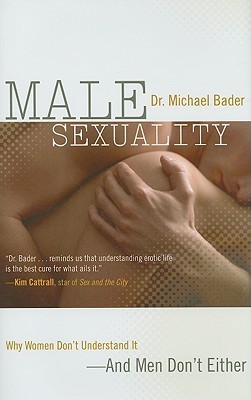
Male Sexuality: Why Women Don't Understand It-And Men Don't Either
Book Description
What happens when the primal urges of men collide with the complexities of modern relationships? In "Male Sexuality: Why Women Don't Understand It—And Men Don't Either," Michael J. Bader strips away societal myths and delves deep into the psyche of male desire. This gripping exploration uncovers the hidden fears, misunderstandings, and desires that shape male sexuality, revealing how both genders grapple with its intricacies. Unravel the truth behind intimacy, vulnerability, and emotional connection in a world filled with confusion. Can we bridge the gap between masculine passion and feminine interpretation, or are we destined to remain misunderstood?
Quick Book Summary
"Male Sexuality: Why Women Don't Understand It—And Men Don't Either" by Michael J. Bader investigates male sexual desire through a psychological lens, revealing how cultural myths, shame, and confusion often mask the true nature of male sexuality. Bader argues that men themselves frequently misunderstand their own desires, creating barriers to intimacy and vulnerability within relationships. The book unpacks common stereotypes about male sexuality and examines how early developmental experiences, societal expectations, and personal anxieties shape the male sexual experience. Bader encourages both men and women to move beyond assumptions, highlighting the importance of empathy and open communication. By delving into the hidden motivations and fears that underlie male desire, Bader provides a roadmap for greater understanding, improved relationships, and deeper emotional connection.
Summary of Key Ideas
Table of Contents
Deconstructing Myths About Male Sexuality
Bader begins by challenging pervasive cultural myths about male sexuality, exposing the simplistic notion that male desire is primarily physical and uncontrollable. He argues that these stereotypes, perpetuated by media and tradition, do a disservice to both men and women by ignoring the emotional and psychological complexities at play. By deconstructing these myths, Bader places male sexuality within a broader context, inviting readers to reconsider what drives men's sexual behavior and how misconceptions fuel misunderstanding and frustration in relationships.
The Role of Shame and Vulnerability
A central theme in Bader’s exploration is how shame and vulnerability shape male sexual experience. He contends that many men harbor deep-seated fears about intimacy, performance, and acceptance, often stemming from early childhood experiences and cultural socialization. These fears can lead to detachment and mask true desire, making it difficult for men to express their needs authentically. Bader highlights that addressing shame is crucial for fostering genuine connection and breaking down barriers to intimacy.
The Psychological Origins of Male Desire
The psychological origins of male sexual desire form a core component of the book. Bader examines how men’s sexual fantasies and behaviors are frequently shaped by unconscious anxieties and needs rooted in early developmental stages. He explains that for many men, sexuality becomes a means of coping with emotional pain, insecurity, or a need for validation. By understanding these underlying motivations, both men and their partners can approach sexual issues with greater empathy and openness.
Communication Barriers in Relationships
Bader discusses the significant role communication—or the lack thereof—plays in deepening the divide between male and female understanding of sexuality. He notes that men are often reluctant to articulate their true desires out of fear of judgment or rejection, leading to secrecy and resentment. On the other side, women may misinterpret or feel alienated by their partners' behaviors. Bader advocates for honest, vulnerable dialogue as a way of dissolving these barriers and cultivating more satisfying relationships.
Bridging Understanding Between Genders
Ultimately, Bader offers strategies for bridging the gap between genders, urging readers to embrace mutual understanding and compassion. He suggests that by letting go of assumptions and confronting uncomfortable emotions, couples can foster emotional intimacy and redefine sexual connection. The book closes on a hopeful note, emphasizing that overcoming misunderstanding is possible when both partners are willing to engage in self-reflection, communicate authentically, and support each other's growth.
Download This Summary
Get a free PDF of this summary instantly — no email required.





